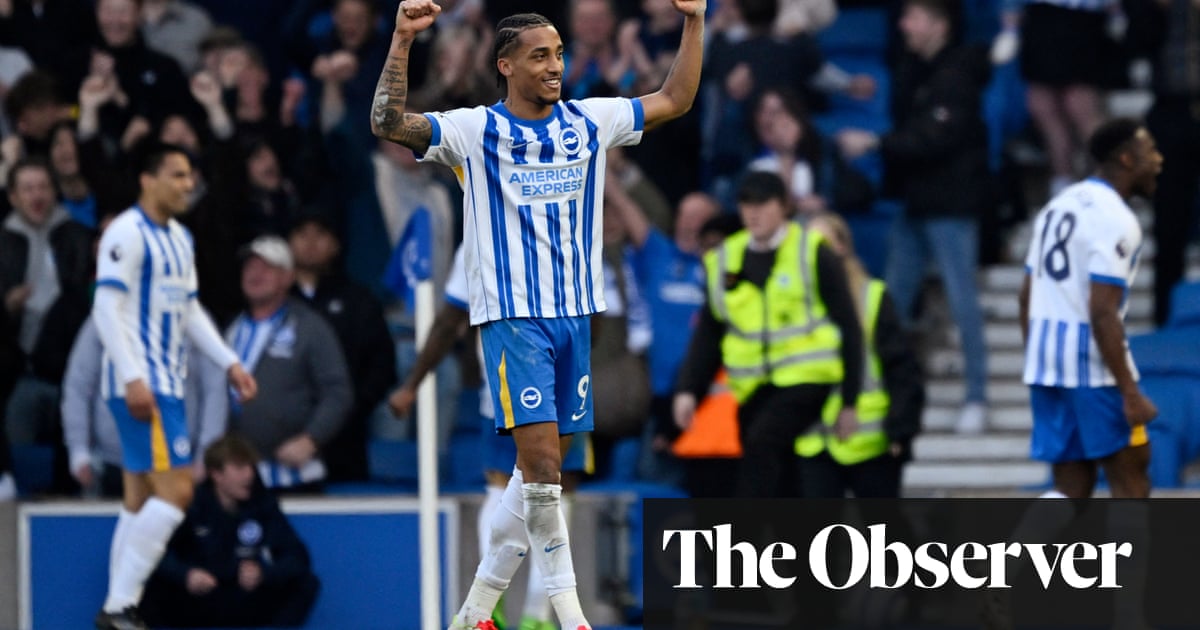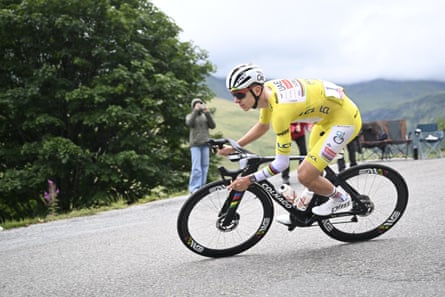
Fourth Tour wins are, I once wrote, “more for the record books than the heart … the penultimate step to cycling greatness, [they] often do little to warm the soul at the time”. The past three weeks suggests that nothing has changed. It’s far from the four stages of grief, but you could argue that a first Tour victory is met with surprise and delight, a second admiration, the third respect, the fourth resignation.
As Tadej Pogacar’s fourth Tour win approached with the inevitability of a steamroller this week the chief cycling writer at l’Equipe, Alex Roos, grumbled about the Slovene’s lack of joie de vivre. “For the last few days, his sulks, his grumbles, his bad mood have blurred and eaten away at the ambience of the end of this Tour, because how can you get enthusiastic if the Yellow Jersey himself gives the impression of being bored and going through something painful …?”

The days when a sprinter such as Mario Cipollini could take four successive stages (1999) are long gone. Now, thanks to Prudhomme’s routefinder‑general Thierry Gouvenou, visiting innocuous places such as Rouen, Toulouse or Carcassonne entails daunting climbs and descents that make for compelling TV viewing.
Again to encourage the attackers, stages over 200km are now the exception while time bonuses at all the finishes encourage potential winners to contest every stage they can. Every day on the Tour, it seems, now has the intensity and unpredictability of a one-day Classic in miniature; every day is massively compelling to watch.
after newsletter promotion
Since leaving Lille on 5 July, the Tour men have enjoyed one stage which followed the pattern of the past: day eight to Laval. The “American quarter-hour” – the term given to the margin Armstrong’s US Postal team would give each day’s breakaway – has been consigned to history. This year, not even the final promenade into Paris is sacred, but a mini-Classic in its final kilometres.
If Pogacar is finding the intensity of the race a bit much, then we should savour the irony; if ever there was a bike racer suited for the current made-for-TV Tour, he is that one. It’s no coincidence that he has won the Tour of Flanders, Liège-Bastogne-Liège and shone in Paris-Roubaix since taking his first Tour in 2020: the intensity; the bike-handling skill; the need to hold position in the peloton and the repeated maximal efforts demanded by the spring one‑day Classics are now the perfect preparation for La Grande Boucle. Hence the emergence of other current stars: Mathieu van der Poel, Ben Healy, Wout van Aert, and “punchy” riders such as Kévin Vauquelin.
The new-look Tour favours the complete bike racer, just as the Tours of the Induráin years were built for a time trialist. Vingegaard struggles to hang on to Pogacar in the Tour’s punchy stages, and that’s not a surprise: the Dane is not a Classic rider in the same register as Pogacar – the last time he was seen in a spring Classic was 2022, when he failed to finish Flèche Wallonne or Liège-Bastogne-Liège.
In fact, you could argue that Vingegaard is doing shockingly well to hold Pogacar, given his obvious comfort zone is the high mountains.
The new-look Tour offers far more openings than Tours of the past, which presents opportunities that were not there in the Froome or Induráin years: however, if you want to beat the reigning champion, you have to out-Pogi Pogi: build a team that can take the race to the Slovene on a daily basis and eventually crack him.
In the real world, however, Vingegaard’s Visma tried to do just that in the past three weeks, and self-destructed in the process. As a result, Pogacar’s rivals face the same conundrum of those of Hinault, Induráin, Armstrong and Froome: how to defeat a champion on top of his game, who has mastered the challenges the organisers have thrown at him and is supported by a team that has grown in confidence and experience each year? You can tweak the Tour all you will, but some things never change.




